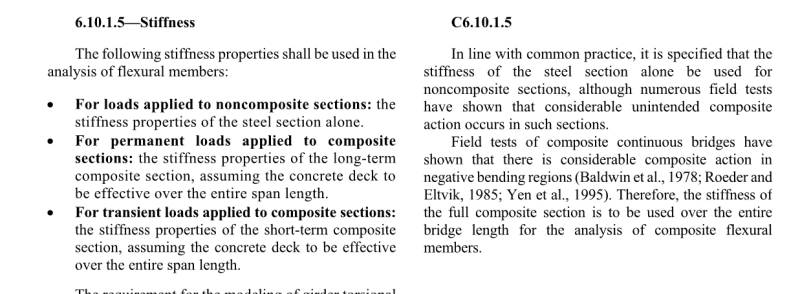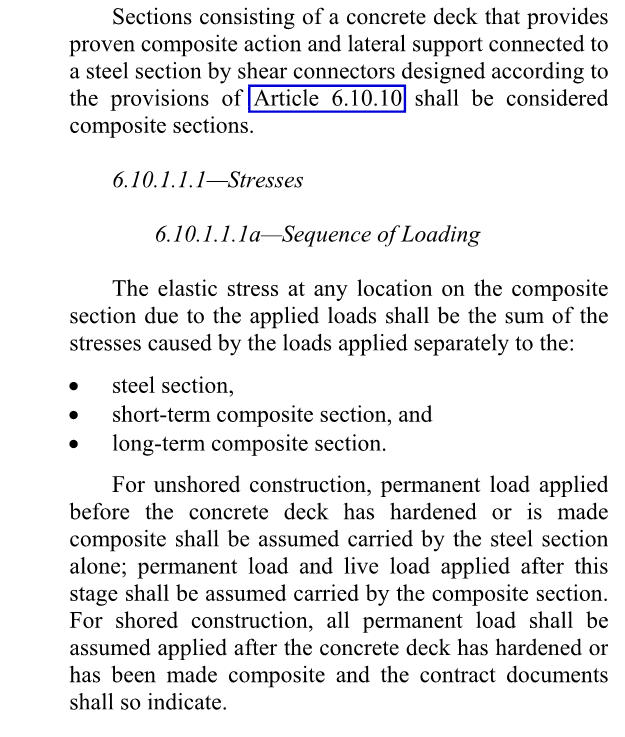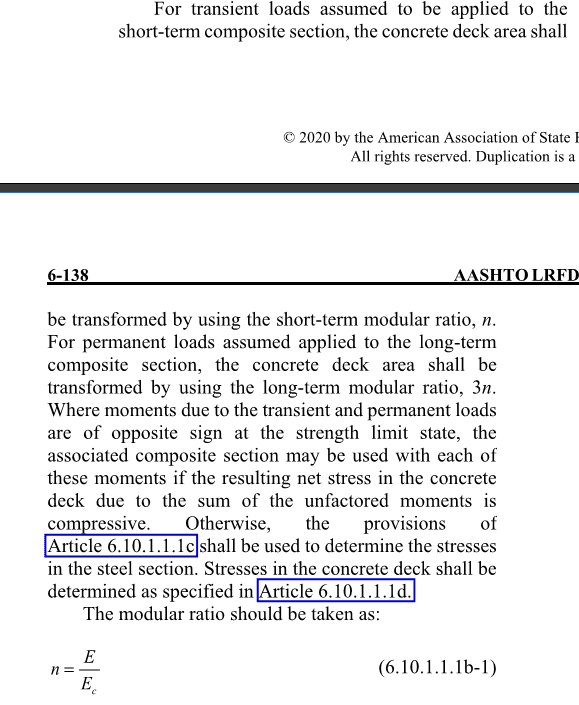Hi Everyone,
For determining the forces in a steel girder section with a concrete deck from a modelling program under different conditions, is my interpretation below correct?
Before the deck hardens, all these forces are assumed taken by the girder only and is modelled as just the girder.
After the deck hardens, any permanent loads are calculated using the long term section (i.e. model the deck as an equivalent steel section by dividing the modulus by 3n), and when determining stresses do the same (deck is divided by 3n).
For live load, the load is calculated using the short term section (i.e. model the deck as an equivalent steel section by dividing the modulus by 1n), and when determining stresses do the same (deck is divided by 1n).
In some analysis programs it seems they will use the short term section properties of 1n to determine the forces and use the long term section properties of 3n to determine the stresses for long term loads. This doesn't seem correct with the way I've interpreted the code. I think the long term section properties of 3n need to be used to determine the forces and the use 3n properties to then determine the stresses.
See snippets below.



For determining the forces in a steel girder section with a concrete deck from a modelling program under different conditions, is my interpretation below correct?
Before the deck hardens, all these forces are assumed taken by the girder only and is modelled as just the girder.
After the deck hardens, any permanent loads are calculated using the long term section (i.e. model the deck as an equivalent steel section by dividing the modulus by 3n), and when determining stresses do the same (deck is divided by 3n).
For live load, the load is calculated using the short term section (i.e. model the deck as an equivalent steel section by dividing the modulus by 1n), and when determining stresses do the same (deck is divided by 1n).
In some analysis programs it seems they will use the short term section properties of 1n to determine the forces and use the long term section properties of 3n to determine the stresses for long term loads. This doesn't seem correct with the way I've interpreted the code. I think the long term section properties of 3n need to be used to determine the forces and the use 3n properties to then determine the stresses.
See snippets below.



